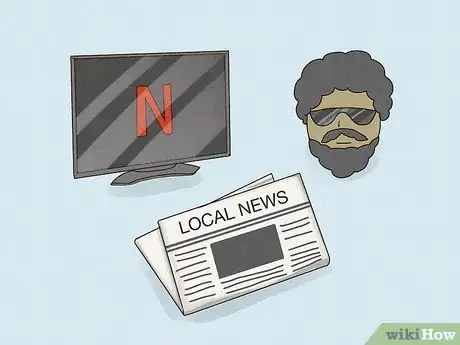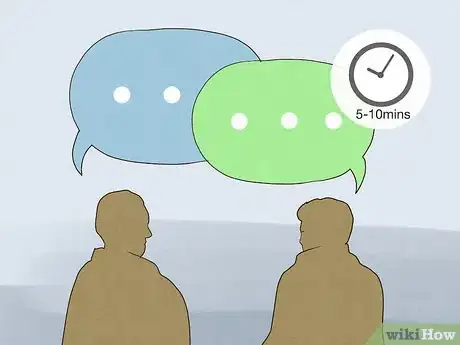This article was co-authored by Donna Novak, Psy.D and by wikiHow staff writer, Hunter Rising. Dr. Donna Novak is a Licensed Clinical Psychologist based in Simi Valley, California. With over ten years of experience, Dr. Novak specializes in treating anxiety and relationship and sex concerns. She holds a BA in Psychology from the University of California, Los Angeles (UCLA) and a doctoral degree (Psy.D) in Clinical Psychology from Alliant International University-Los Angeles. Dr. Novak uses a differentiation model in treatment that focuses on personal growth by increasing self-awareness, personal motivation, and confidence.
There are 16 references cited in this article, which can be found at the bottom of the page.
wikiHow marks an article as reader-approved once it receives enough positive feedback. This article received 11 testimonials and 88% of readers who voted found it helpful, earning it our reader-approved status.
This article has been viewed 1,728,941 times.
You’ve probably been told not to talk to strangers, but it can be really rewarding to socialize with people you don’t know. While it may seem a little tough figuring out what to say, there are a lot of things you can do to make small talk with anyone that you meet. We’ll start off with some tips on friendly body language and move on to topics you can bring up to break the ice and encourage them to hold a conversation!
Steps
Warnings
- If a stranger makes you feel uncomfortable or if you don’t feel safe around them, avoid having a conversation with them.[22]⧼thumbs_response⧽
References
- ↑ https://www.linkedin.com/pulse/best-way-introduce-yourself-strangers-networking-events-val-matta/
- ↑ https://www.inc.com/jayson-demers/7-ways-to-make-strangers-like-you-instantly.html
- ↑ https://www.npr.org/sections/health-shots/2019/07/26/744267015/want-to-feel-happier-today-try-talking-to-a-stranger
- ↑ https://www.forbes.com/sites/nickmorgan/2011/09/08/body-language-quick-takes-how-to-spot-openness/?sh=33639a545b14
- ↑ https://www.nytimes.com/guides/smarterliving/be-better-at-parties
- ↑ https://ideas.ted.com/how-to-talk-to-strangers/
- ↑ https://www.inc.com/jeff-haden/the-perfect-way-to-introduce-yourself-in-any-setting.html
- ↑ https://www.inc.com/jayson-demers/7-ways-to-make-strangers-like-you-instantly.html
- ↑ https://www.nytimes.com/guides/smarterliving/be-better-at-parties
- ↑ https://www.nytimes.com/guides/smarterliving/be-better-at-parties
- ↑ https://www.nbcnews.com/better/lifestyle/why-compliments-make-us-feel-so-good-how-get-better-ncna1062546
- ↑ https://www.chicagotribune.com/lifestyles/fashion/sc-cons-rude-compliment-answer-angel-20190814-bxrt2kw52jappht5apx4uy72bq-story.html
- ↑ https://www.inc.com/jayson-demers/7-ways-to-make-strangers-like-you-instantly.html
- ↑ https://www.forbes.com/sites/remyblumenfeld/2019/08/18/8-top-networking-questions-from-harvard-business-review/?sh=26b461015537
- ↑ https://www.businessinsider.com/how-to-keep-a-conversation-going-2011-1
- ↑ https://www.entrepreneur.com/article/243745
- ↑ https://ggia.berkeley.edu/practice/active_listening
- ↑ https://socialpronow.com/blog/know-when-conversation-over/
- ↑ https://www.psychologytoday.com/us/blog/why-bad-looks-good/202011/why-you-should-talk-strangers
- ↑ https://www.npr.org/sections/health-shots/2019/07/26/744267015/want-to-feel-happier-today-try-talking-to-a-stranger
- ↑ Donna Novak, Psy.D. Licensed Clinical Psychologist. Expert Interview. 8 December 2020.
- ↑ https://www.psychologytoday.com/us/blog/why-bad-looks-good/202011/why-you-should-talk-strangers
About This Article
To talk to strangers, remember that people can't tell how nervous you are, so try to act confident even if you're not. When you're talking to someone, make eye contact with them, smile, and open up your body language to appear relaxed and help put the other person at ease. If you don't know what to talk about, try commenting on something that's going on around your or asking open-ended questions, like "What have you been up to tonight?" You could even ask them to explain something to you, like something that happened in the news, so they do most of the talking. To learn how to interact with strangers in different situations, like on a date, scroll down!
















































































